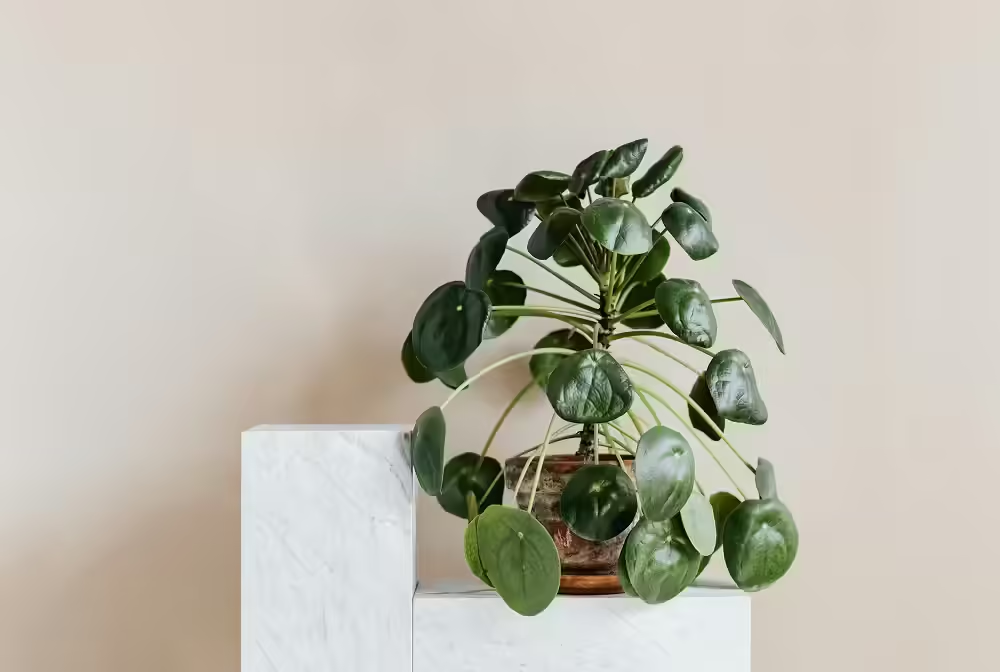If you’re looking to bring a sense of peace and beauty into your living space, Chinese indoor plants are an excellent choice.
Known for their aesthetic appeal and cultural significance, these plants embody harmony and balance, making them perfect additions to any home. Whether you’re drawn to the elegant Pilea (Chinese Money Plant) or the lush Lady Palm, there’s no shortage of stunning greenery to explore.
In this post, we’ll take a deeper dive into the fascinating world of Chinese indoor plants, uncovering why they’re more than just decorative pieces and exploring popular species that thrive in indoor environments. From ancient traditions to modern plant care, indoor Chinese plants offer something truly unique.
Facts About Chinese Indoor Plants
When we think of Chinese indoor plants, it’s impossible not to recognize the deep cultural and historical significance they hold in Chinese tradition.
While many people associate the art of bonsai with Japan, its roots can actually be traced back to China’s Han Dynasty around 210 BC. This meditative practice of growing miniature trees in containers merges the natural world with careful artistry, forming a long-standing connection between plants and the home.
Moreover, the ancient Chinese practice of feng shui, which has been around for over 6,000 years, views indoor plants as essential to creating balance and harmony within a space. These plants aren’t just decorative; they embody a philosophy where nature interacts with daily life.
Interestingly, as early as 1,000 BC, wealthy families in China were growing indoor plants to symbolize prosperity.
China is also home to a vast array of plant life. The country is home to thousands of edible and medicinal species, making it a hotspot for biodiversity. Many of these species grow exclusively in China’s forests, contributing to the unique variety of Chinese indoor plants we love today.
List of Popular Chinese Indoor Plants
Here’s a selection of popular Chinese indoor plants that can add an exotic and tranquil touch to your home. Each of these plants has unique characteristics and needs to thrive indoors.
Pilea (Chinese Money Plant) Among The Most Popular Chinese Indoor Plants
- Origin: Yunnan Province, China
- Light: Prefers bright, indirect light.
- Watering: Water when the top inch of soil is dry.
- Soil: Well-draining potting mix.
- Form & Shape: Round, coin-shaped leaves, giving it its nickname “money plant.”
Lady Palm (Rhapis excelsa)
- Origin: Southern China
- Light: Thrives in low to bright indirect light.
- Watering: Keep soil consistently moist but not waterlogged.
- Temperature & Humidity: Prefers warm temperatures and moderate humidity.
Dragon Boat Flower (Ixora chinensis)
- Origin: Native to China and Southeast Asia.
- Light: Full sun to partial shade.
- Watering: Water regularly but ensure good drainage.
- Soil: Prefers slightly acidic, well-draining soil.
- Form & Shape: Bright clusters of small flowers, often in red or orange.
Ficus Pumila (Creeping Fig)
- Origin: East Asia (China, Japan, Vietnam)
- Light: Prefers indirect sunlight.
- Watering: Water moderately, allowing the soil to dry between waterings.
- Form & Shape: Small, heart-shaped leaves and a vine-like growth pattern.
Sago Palm (Cycas revoluta)
- Origin: Southern China and Japan
- Light: Needs bright, indirect light.
- Watering: Water thoroughly but let the soil dry out between waterings.
- Form & Shape: A slow-growing plant with stiff, feather-like leaves.
Strawberry Begonia (Saxifraga stolonifera)
- Origin: Native to Eastern Asia, Western China, and Japan.
- Light: Prefers bright, indirect light.
- Watering: Keep the soil evenly moist.
- Form & Shape: Rosettes of leaves with red stems and small white flowers.
Pothos (Epipremnum aureum) One of The Most Famous Chinese Indoor Plants
- Origin: Southeast Asia, including China.
- Light: Thrives in low to bright indirect light.
- Watering: Water when the top inch of soil is dry.
- Form & Shape: Heart-shaped leaves with a trailing or climbing growth habit.
Peacock Moss (Selaginella uncinata)
- Origin: China and Southeast Asia.
- Light: Thrives in low to medium light.
- Watering: Keep the soil consistently moist.
- Form & Shape: Low-growing, moss-like foliage with a vibrant, peacock-blue hue.
Chirita (Primulina)
- Origin: Southeast Asia and Southern China.
- Light: Prefers indirect light.
- Watering: Water moderately, allowing the soil to dry out between waterings.
- Form & Shape: Rosette-forming plant with delicate, tubular flowers.
Lipstick Vine (Aeschynanthus)
- Origin: Southern China and Indo-China.
- Light: Bright, indirect light.
- Watering: Water thoroughly, but allow the soil to dry between waterings.
- Form & Shape: Trailing vine with bright red, tube-like flowers that resemble lipstick.
Ginseng Ficus Bonsai Tree
- Origin: Korean Peninsula and northern China
- Light: Bright, indirect light.
- Watering: when the top layer of soil dries out.
- Form & Shape: This bonsai features thick, twisting roots and small, glossy leaves. Enjoys higher humidity.
Hoya (Wax Plant)
- Origin: Southeast Asia, including China.
- Light: Thrives in bright, indirect light.
- Watering: requires watering when the soil dries out.
- Form & Shape: A trailing plant with thick, waxy leaves and fragrant star-shaped flowers.
Chinese Indoor Plants: Final Thoughts
Whether you’re an experienced plant enthusiast or just starting your green journey, Chinese indoor plants provide a perfect blend of beauty, history, and serenity to your space. Their ability to purify the air and add vibrant energy makes them ideal for any home.
As you care for these Chinese plants indoor, remember their deep cultural roots and the balance they can bring to your surroundings.
From the charming Chinese Money Plant to the impressive Lady Palm, your options are as diverse as they are beautiful. Ready to bring some tranquility into your home?
Explore the world of indoor Chinese plants today and discover the natural beauty they have to offer.

